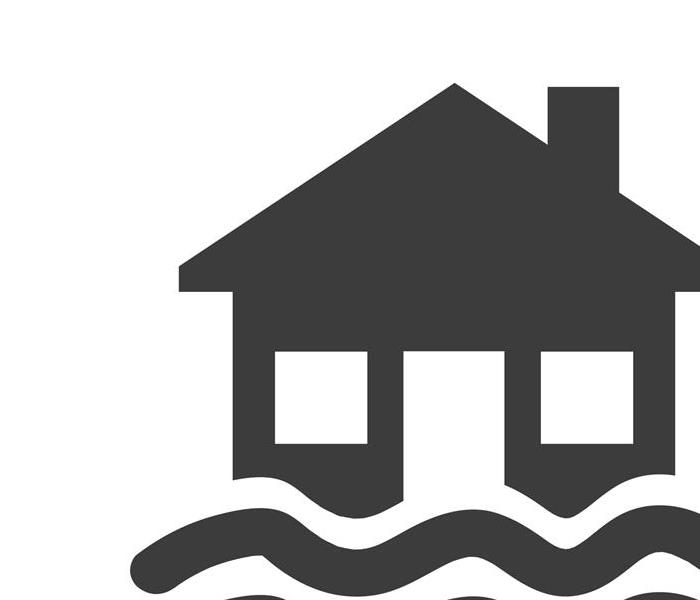What Kind of Secondary Damage Can You Expect After a Delayed Response to Flood Damage?
5/27/2020 (Permalink)
 Trust the experts at SERVPRO with your homes flood damage. We have the tools and knowledgeable technicians to get the job done.
Trust the experts at SERVPRO with your homes flood damage. We have the tools and knowledgeable technicians to get the job done.
SERVPRO’s Highly-Qualified Team Is Familiar with the Long-Term Consequences of Flood Damage in Augusta -- We Have the Resources to Respond Successfully
Although you would heed the advice to contact flood water removal professionals immediately and quite willingly if the emergency occurs when you are far from your Augusta home, following the recommendation is impossible. Whether the floodwaters are storm or rising-waterway related, when you return to a lower level full of silty, smelly fluids, you need help, not a lecture.
Why Is Rapid Removal of Flooding Best Practices?
When flood damage in Augusta ripens for hours or days before mitigation and remediation efforts begin, the consequences are largely predictable. The longer restoration efforts delay, the more profound the damage and higher the expense to effectuate solutions.
- Drywall wicks the floodwaters up above the flood line, exposing the building material to deterioration--swelling, bulging, crumbling.
- Laminate floors hold up poorly, the veneer separating from the base, ruining the materials.
- Carpeting and padding absorb the fluids, stretching, and weakening, increasing the risk of adhesive failure and delamination of fibers from the backing.
- Hardwood and subfloors, as well as wood framing and supports, begin to absorb the fluid, the processed, and unfinished wood products in the sublayers and framing faring worse because of the lack of relative density and protective finishes.
- Metal fasteners tarnish and rust.
- Appliances and HVAC system housing might take on water and begin to corrode, while electronic or mechanical switches short out, an electric hazard created as well.
- Contents, including everything from furniture to documents and photos to clothing and household goods, become saturated and begin to disintegrate in many cases.
Is It Impossible to Recover When Water Removal and Drying Comes Late?
SERVPRO invests in both the best training and the most innovative and effective equipment. Our managers and technicians complete rigorous coursework developed by the Institute of Inspection, Cleaning, and Restoration Certification (IICRC), mastering strategies that can transform spaces devastated by even advanced flood damage back to preloss condition. Our equipment is specialized and powerful, able to extract copious amounts of water fast, and our drying inventory is capacious enough to provide the air movement, temperature adaptations, and dehumidification needed for any scale of damage.
What About the Unintended Outcomes of Delay--Secondary Damage?
You might be wondering if your entire home will need rebuilding after a tardy response to water damage. One of the considerations is that floodwaters are already evaluated as Category 3 water, the most contaminated, by definition. As time passes, the contaminants do increase. Some materials suffer severe damage and need to be removed and replaced. Others can be remediated:
- Padding and, nearly always, carpeting must be pulled up and disposed of as hazardous waste. We help with this challenging task, removing water not to save the floor covering for reuse, but to lessen its weight and reduce the humidity in the space.
- Warped hardwood can make a comeback if water extraction gets underway as soon as possible. Wanded extractors and negative pressure floor mats can pull most of the liquid out, and then drying can bring the moisture content in the wood back to the average of approximately 10 percent for refinishing. The subfloors must be dried as well, and inspection might suggest that some plywood sheets might need replacement.
- Structural drying using air movers, heaters, and dehumidifiers can reduce the swelling of structural joists, beams, studs, and other supports. We sometimes work with engineers who might recommend selected reinforcement with new materials.
- Worried about microbial growth? We address this with aggressive cleaning using EPA-registered products after the water evacuates. Follow up with EPA-registered disinfectants inhibit regrowth of infectious pathogens. Because our crews are at risk of contact with hazardous agents, technicians wear personal protective equipment (PPE), usually throughout the project.
What About Mold Growth and Damage?
It is nearly impossible to make it through a delayed-response flooding event without some mold involvement. Mold spores are present in all spaces, including your flooded home. If 24 to 48 hours pass, the spores use the now widely available water to fuel their rapid growth and multiplication. We help manage this secondary damage in several ways:
- We can choose to use a preliminary broadcast treatment of EPA-registered antimicrobials to treat the worksite before tasks begin.
- We are on the lookout for mold throughout the mitigation and remediation of your flooded property.
- If we observe colonies and spreading, we add a mold remediation phase to the overarching flood recovery plan. Certified mold remediators contain, remove, and lawfully discard moldy materials. Post-cleanup, we apply EPA-registered antimicrobials to affected and adjacent surfaces to inhibit mold rebound.
What is the benefit of reaching out to SERVPRO of Augusta South / Burke & Wilkes Counties for help with complicated flood damage scenarios? Our experienced and talented team can transform chaos back to “Like it never even happened,” when given the call at (706) 843-1990.






 24/7 Emergency Service
24/7 Emergency Service